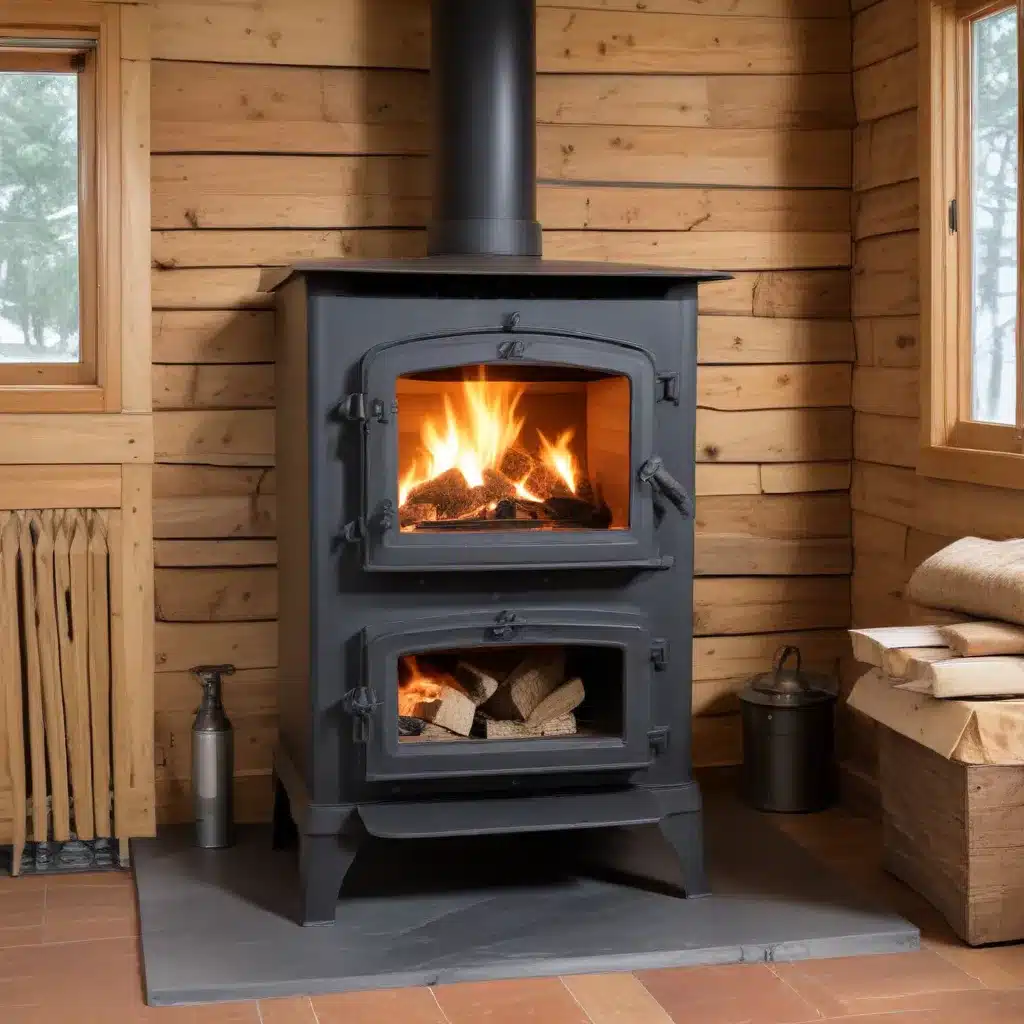
Understanding the Role of Airflow in Wood Stove Performance
Efficient and effective heating with a wood stove is heavily dependent on managing the airflow through the system. The way air enters, circulates, and exits the stove can have a significant impact on the combustion process, heat output, and overall efficiency. As a seasoned expert in wood stoves and heating solutions, I’ll provide practical tips and in-depth insights to help you optimize your wood stove’s airflow for improved heating and efficiency.
The Importance of Proper Air Intake
The primary air intake is the lifeblood of a wood stove’s combustion process. Ensuring adequate and controlled air supply is crucial for achieving a clean, hot, and efficient burn. An insufficient air intake can lead to incomplete combustion, resulting in increased smoke, creosote buildup, and reduced heat output. Conversely, an excessively high air intake can cause the fire to burn too hot, wasting fuel and potentially damaging the stove.
Tip: Adjust the air intake damper or primary air control to find the sweet spot where the fire burns cleanly and steadily, without smoldering or raging out of control.
Harnessing Secondary Air for Improved Efficiency
Many modern wood stoves are designed with secondary air inlets that introduce a separate airflow above the primary combustion zone. This secondary air helps to re-ignite and burn off unburned gases and particulates, improving overall combustion efficiency and reducing emissions. Proper management of the secondary air supply is essential for maximizing the stove’s heating potential.
Tip: Experiment with the secondary air control to find the right balance that maintains a hot, clean-burning fire without excessive air flow that could cool the combustion chamber.
Optimizing Stove and Chimney Airflow
The interaction between the wood stove and the chimney is crucial for ensuring efficient airflow and heat transfer. The chimney’s design, height, and condition can significantly impact the stove’s performance. A properly sized, well-insulated, and unobstructed chimney will create the necessary draft to draw air through the stove, facilitating complete combustion and efficient heat transfer.
Tip: Regularly inspect and maintain your chimney to ensure it is free of obstructions and creosote buildup, which can impede airflow and reduce the stove’s efficiency.
Balancing Air Supply and Heat Output
Striking the right balance between air supply and heat output is the key to achieving optimal wood stove performance. This may require some experimentation and fine-tuning, as the ideal settings can vary depending on factors such as the stove’s design, the type of wood being burned, and the desired heat output.
Tip: Monitor the fire’s behavior and adjust the air controls accordingly to maintain a clean, hot, and efficient burn that meets your heating needs.
Incorporating Thermal Mass for Sustained Heat
While optimizing airflow is crucial, incorporating thermal mass into your wood stove setup can further enhance its heating efficiency and performance. Thermal mass, such as soapstone or masonry, can absorb and slowly release heat, providing a more consistent and comfortable heating experience.
The Benefits of Thermal Mass
Thermal mass-equipped wood stoves, or those with a dedicated thermal storage system, can offer several advantages:
- Improved Heat Retention: The thermal mass absorbs heat from the fire, slowly releasing it over time, providing a more consistent and long-lasting heat output.
- Reduced Fuel Consumption: The ability to burn the wood stove at a higher, more efficient rate and then allow the thermal mass to gradually release the heat can result in significant fuel savings.
- Improved Comfort: The steady, radiant heat from the thermal mass can create a more comfortable and even heating environment, reducing temperature fluctuations.
Tip: Consider upgrading to a wood stove with a thermal mass component or incorporating a dedicated thermal storage system, such as a masonry heater or a water-based thermal storage tank, to maximize your wood stove’s efficiency and heating performance.
Maintenance and Safety Considerations
Proper maintenance and safety practices are essential for ensuring the longevity and safe operation of your wood stove. Regular cleaning, inspections, and adherence to manufacturer guidelines can help you avoid potential hazards and maintain optimal performance.
Routine Maintenance Tasks
- Ash Removal: Regularly remove ash buildup from the stove’s firebox to maintain proper airflow and prevent potential fire hazards.
- Chimney Cleaning: Schedule professional chimney sweeping services to remove creosote buildup and ensure unobstructed airflow.
- Gasket Inspection: Check the condition of the door and other gaskets, replacing them as needed to maintain an airtight seal and prevent air leaks.
- Component Inspection: Visually inspect the stove’s internal components, such as the firebrick, baffle, and air control mechanisms, for any signs of wear or damage.
Safety Precautions
- Proper Installation: Ensure your wood stove is installed by a qualified professional, following all local building codes and manufacturer’s instructions.
- Clearance to Combustibles: Maintain the required clearance between the stove and any nearby combustible materials, as specified in the installation manual.
- Smoke Detectors and Carbon Monoxide Alarms: Install and regularly test smoke detectors and carbon monoxide alarms in your home to ensure the safety of your family.
- Fire Extinguisher: Keep a fire extinguisher nearby and familiarize yourself with its proper use in case of a fire emergency.
By prioritizing airflow optimization, incorporating thermal mass, and adhering to proper maintenance and safety practices, you can unlock the full potential of your wood stove, enjoying efficient, consistent, and safe heating for your home. For more information and resources, visit woodstoveheaters.com.


